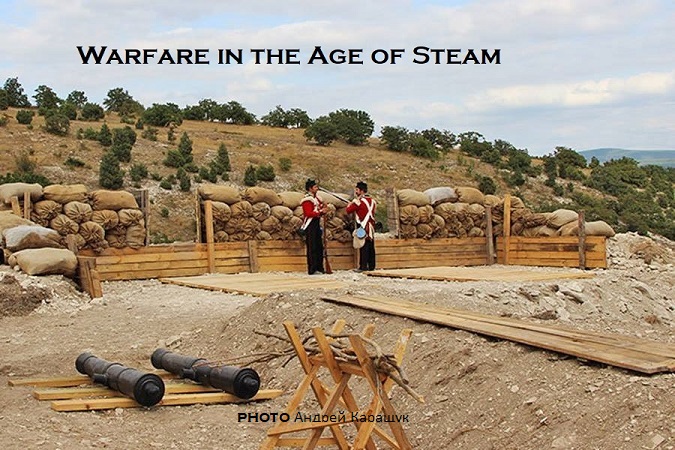THE DANGERS OF PLAYING AT WAR, (From Punch vols 28-9)
War is not a thing to be trifled with, and its horrors are much too real to be the legitimate subjects of burlesque, or any other kind of mockery. The nearer the imitation approaches to the real thing, where an imitation of war is concerned, the more distasteful it must be to all persons of common sense, and common humanity. The mania for converting Ithe horrors of war into a subject of amusement for the million, has received a somewhat sad lesson in the accident that has lately happened at Cremorne Gardens; where, for the benefit of some charity, there was to be a mock representation of the Battle of Inkermann. There was all the usual pride, pomp, and circumstance of in-glorious (theatrical) war; and, to give reality " to the business, a dreadful reality it turned out, some of the Guards were " allowed by the authorities" to take part in the spectacle. Of coarse, the only real element in the business was incompatible with all the shams of which it was made up; and, amidst the sham fortifications, the sham defences, the sham barricades, and all the other gim-crack appurtenances of a sham-fight, the real soldiers tumbled to the ground from a height of some twenty feet with terrible reality.
Of course, when it is too late, everybody is exclaiming against the impropriety of allowing the Guards to take a part in these caricature copies of the horrors of war; in which everything is purposely made to yield, from the pasteboard ramparts, to theshilling-a-night supernumerary Russians. The sort of enthusiasm that is excited among the soldiers, by an imitation attack on an imitation enemy, in the teeth of imitation fire from imitation batteries, is not likely to be of much service in the hour of real battle, when there is no stage-director ordering the enemy where to fall back, and leading on the British troops to the point where, by previous arrangement, they are destined to be victorious. A panorama of Sevastopol is all well enough, and a pictorial representation of the siege may be made a matter of interest; but an attempt to show the actual storming of a place with real troops, must always be • melancholy, and, indeed, a feeble spectacle. Nothing can be better than the picture now being exhibited at the Surrey Zoological Gardens; but the moment the action begins, and the firing of the gunssets the ducks quacking in the lake, while the playing of the band drowns, on the whole, the occasionally heard cries of—" Now Dick, set fire to that tow," " Ready there with them red- lights P " " Off with them fireworks," and other stage-directions of a kindred character, the whole affair becomes ridiculous.
'Cremorne Gardens, in Chelsea, opened in the 1840s, with a thousand flickering gas lights, a theatre, firework displays and an American bowling alley – claimed to be the first in London. The army made soldiers available to perform in massive pageants there. In 1855 they were re-enacting the storming of Sebastopol, in the Crimean war. They advanced with their bayonets fixed. The scaffold collapsed, and they fell, impaling themselves on their bayonets.'
From hereFrom the Carlyle letters onlineI asked a working man what had happened— “It was a great night at
Cremorne—storming of Sebastopol—30 or forty soldiers were
storming, when the scafolding broke, and they all fell in
on their own bayonets! The two who had passed were killed they said and all the others hurt”— But a sergeant, whom I accosted after, told me there were none killed and only three hurt badly.
9More stuff on the Calamita Bay Blog
 Ironclads developed during the Crimean War to use against the Baltic forts like Kronstadt. Their development partly caused the Russians to sue for peace.
Ironclads developed during the Crimean War to use against the Baltic forts like Kronstadt. Their development partly caused the Russians to sue for peace.





























